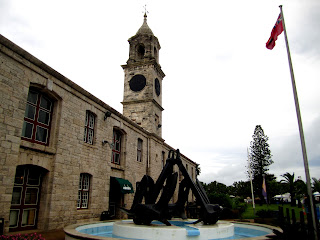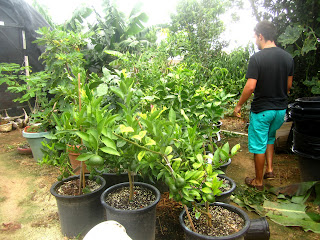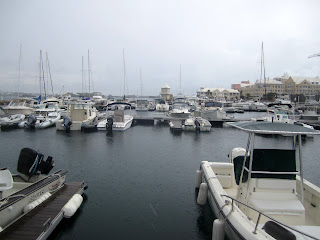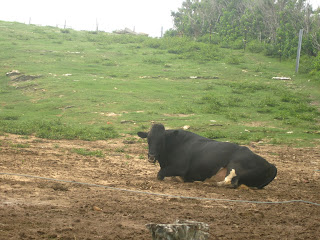On Tuesday, our luck ran out - we woke up to rain :(
First stop of the day: The Bermuda Aquarium Museum & Zoo - BAMZ - a must-see, and the perfect solution to a rainy day. I took a little trip to the wikipedia page about BAMZ, and this is what I discovered: The Aquarium contains over 200 species of fish and invertebrates. The largest display is the 140,000 gallon North Rock Exhibit, which is a living replica of North Rock. The real North Rock is part of the Rim Reef system, the Northern-most chain of coral reefs in the world. The Natural History Museum traces the geological formation and ecological development of the island, highlighting the island's role in the migration of many species of birds and marine animals.There are also exhibits on different cultures within Bermuda, and there is a picture of Jordan's family there to represent the Portuguese population in Bermuda!
We walked through the South American Aviary to see many exotic bird species native to the tropics, and then through the Islands of the Caribbean exhibit where animals from the Caribbean islands are allowed to roam free. One of the most vibrant displays was the Caribbean Pink Flamingos exhibit, and the weirdest was on where you can touch things!
 |
| Huge eel! |
 |
| Green Sea Turtles |
 |
| Green Sea Turtle |
 |
| A Harbor Seal putting on a show |
 |
| Tour Guide! |
 |
| These guys were 90 years old! |
Then the rained ceased, and we drove to St. George's, the oldest continuously inhabited English town in the New World - and the second oldest English settlement in the Americas (after St. John's!). St. george's is a UNESCO World Heritage Site.
We got to see the Unfinished Church, which was meant to replace St. Peter's (the oldest surviving Anglican and oldest continuously occupied Protestant church in the Western hemisphere), in the 1870s but construction was stopped due mostly to funding problems and now it's just great to explore - especially to me, when it comes to buildings, the older (or more run-down!) the better.
Most of St. George's buildings were constructed in the 17th to 19th centuries, and efforts have been made both to prevent development, and to hide any signs of later changes. For example, power and telephone lines are underground, and the street lighting has a period style. At the town centre lies King's Square, where there is a ducking stool, a replica of one that was once used to dump gossiping women into the harbour. Nowadays, local volunteers recreate this, which we got to see!



































































